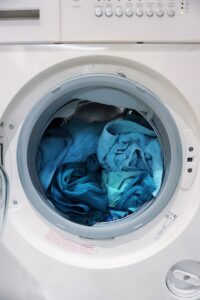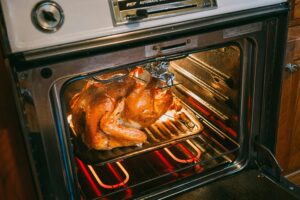There’s nothing more frustrating than trying to cook a meal on a stove that won’t stay lit. Whether you’re trying to boil water for pasta or simmer a delicious sauce, a stove that keeps going out can be a major inconvenience. Understanding the causes of this issue and knowing how to troubleshoot it can save you time, money, and frustration. In this article, we will explore the common causes of a stove that won’t stay lit and provide step-by-step instructions for troubleshooting and fixing the problem.
Key Takeaways
- A stove that won’t stay lit can be caused by ignition problems, gas flow issues, or faulty parts.
- Understanding the anatomy of your stove can help you troubleshoot and diagnose problems more effectively.
- To troubleshoot a stove that won’t stay lit, start by checking the thermocouple and gas valve.
- If you identify faulty parts, such as a broken igniter or clogged burner, they may need to be replaced.
- Regular cleaning and preventative maintenance can help keep your stove working properly and prevent future issues.
Common Causes of a Stove that Won’t Stay Lit
There are several common issues that can cause a stove to not stay lit. One of the most common causes is clogged burners. Over time, food particles and grease can build up on the burners, blocking the flow of gas and preventing the flame from staying lit. Another common issue is a faulty thermocouple. The thermocouple is a safety device that detects whether the pilot light is lit and allows gas to flow to the burners. If the thermocouple is faulty, it may not detect the pilot light and will shut off the gas flow, causing the flame to go out. Lastly, gas flow problems can also cause a stove to not stay lit. This can be due to issues such as low gas pressure or a faulty gas valve.
Understanding the Anatomy of a Stove
To effectively troubleshoot and fix a stove that won’t stay lit, it’s important to have a basic understanding of its anatomy. A typical stove consists of several key parts, including the burners, pilot light, thermocouple, gas valve, and control knobs. The burners are where the flames are produced and where you place your pots and pans for cooking. The pilot light is a small flame that stays lit continuously and ignites the burners when you turn them on. The thermocouple is a safety device that detects whether the pilot light is lit and allows gas to flow to the burners. The gas valve controls the flow of gas to the burners, and the control knobs allow you to adjust the flame intensity.
How to Troubleshoot a Stove that Won’t Stay Lit
When troubleshooting a stove that won’t stay lit, it’s important to follow a systematic approach to identify the specific issue causing the problem. Start by checking for clogged burners. Remove the burners and clean them thoroughly with warm, soapy water. Use a toothbrush or a small brush to remove any stubborn debris. Once the burners are clean, reinstall them and try lighting the stove again. If the problem persists, move on to checking the thermocouple. Locate the thermocouple near the pilot light and make sure it is properly positioned and not bent or damaged. If everything looks fine with the thermocouple, move on to checking the gas flow.
Diagnosing Ignition Problems in Your Stove
If you’ve ruled out clogged burners and a faulty thermocouple as the cause of your stove not staying lit, it’s time to check for ignition problems. Common ignition issues include faulty spark modules and broken igniters. The spark module is responsible for generating the spark that ignites the gas when you turn on a burner. If the spark module is faulty, it may not be producing a spark or may be producing a weak spark, which can prevent the burner from staying lit. Similarly, if the igniter is broken or worn out, it may not be able to produce a spark at all. To diagnose and fix these issues, you will need to access the spark module and igniters, which are usually located behind the control panel of your stove.
Identifying Gas Flow Issues in Your Stove

If you’ve checked for clogged burners, a faulty thermocouple, and ignition problems, and your stove still won’t stay lit, it’s time to look for gas flow issues. Common gas flow issues include clogged gas lines and faulty gas valves. Over time, gas lines can become clogged with debris, preventing the flow of gas to the burners. Similarly, a faulty gas valve may not be allowing the proper amount of gas to flow to the burners. To diagnose and fix these issues, you will need to access the gas lines and gas valve, which are usually located at the back of your stove. It’s important to exercise caution when working with gas lines, as they can be dangerous if not handled properly.
Testing the Thermocouple in Your Stove
The thermocouple is a crucial component of a stove’s operation, as it detects whether the pilot light is lit and allows gas to flow to the burners. If the thermocouple is faulty, it may not detect the pilot light and will shut off the gas flow, causing the flame to go out. To test the thermocouple, start by turning off the gas supply to your stove. Locate the thermocouple near the pilot light and disconnect it from the gas valve. Use a multimeter set to millivolts to test the thermocouple for continuity. If the multimeter reading is zero or close to zero, the thermocouple is faulty and needs to be replaced.
Checking the Gas Valve in Your Stove
The gas valve is another important component of a stove’s operation, as it controls the flow of gas to the burners. If the gas valve is faulty, it may not be allowing the proper amount of gas to flow to the burners, causing them to not stay lit. To check the gas valve, start by turning off the gas supply to your stove. Locate the gas valve, which is usually located at the back of your stove. Use a multimeter set to ohms to test the gas valve for continuity. If the multimeter reading is infinite or significantly higher than zero, the gas valve is faulty and needs to be replaced.
Replacing Faulty Parts in Your Stove
If you’ve identified a faulty thermocouple or gas valve as the cause of your stove not staying lit, it’s important to replace these parts as soon as possible. Faulty parts can not only prevent your stove from functioning properly but can also pose a safety hazard. To replace a faulty thermocouple, start by turning off the gas supply to your stove. Locate the thermocouple near the pilot light and disconnect it from the gas valve. Install the new thermocouple by connecting it to the gas valve and positioning it near the pilot light. To replace a faulty gas valve, start by turning off the gas supply to your stove. Locate the gas valve, which is usually located at the back of your stove. Disconnect the gas line from the gas valve and remove any mounting screws or brackets holding the valve in place. Install the new gas valve by connecting the gas line and securing it with mounting screws or brackets.
Cleaning Your Stove for Optimal Performance
Regular cleaning is essential for maintaining optimal performance and preventing issues with your stove. Over time, food particles, grease, and other debris can accumulate on the burners, causing them to clog and preventing the flame from staying lit. To clean your stove, start by removing the burners and soaking them in warm, soapy water. Use a toothbrush or a small brush to scrub away any stubborn debris. Wipe down the surface of your stove with a damp cloth or sponge to remove any spills or stains. For stubborn stains or burnt-on food, use a non-abrasive cleaner and a scrub brush. Be sure to rinse the burners thoroughly and allow them to dry completely before reinstalling them.
Preventative Maintenance for Your Stove
In addition to regular cleaning, there are several other maintenance tasks you can perform to keep your stove in optimal condition. Regularly inspect the burners for signs of wear or damage and replace them if necessary. Check the gas lines for any signs of leaks or damage and have them repaired or replaced as needed. Inspect the pilot light and thermocouple for proper positioning and functionality. Lubricate any moving parts, such as control knobs or hinges, with a silicone-based lubricant to prevent sticking or squeaking. It’s also a good idea to have your stove professionally serviced at least once a year to ensure that all components are functioning properly and to address any potential issues before they become major problems.
In conclusion, understanding and troubleshooting a stove that won’t stay lit is essential for maintaining its performance and longevity. By familiarizing yourself with the common causes of this issue and following the step-by-step instructions provided in this article, you can effectively diagnose and fix the problem. Regular cleaning and preventative maintenance are also important for keeping your stove in optimal condition. By taking action to maintain your stove’s performance, you can ensure that it continues to serve you well for years to come.
If you’re struggling with a stove that won’t stay lit, you’re not alone. It can be frustrating and inconvenient, but luckily there are solutions. In a related article on 911 Appliance’s blog, they provide helpful tips for diagnosing and fixing this common issue. From checking the gas supply to inspecting the igniter, this article covers all the potential causes and offers step-by-step solutions. Whether you’re a DIY enthusiast or prefer to call in the professionals, this article will guide you in getting your stove back up and running. Check out the article here for more information.
What Are Some Potential Solutions for a Stove That Won’t Stay Lit?
When dealing with common stove problems decoded, such as a stove that won’t stay lit, there are a few potential solutions to try. First, ensure that the burner cap is placed correctly. Check for any blockages in the burner holes. Additionally, clean the igniter to ensure proper functionality.



